
VO
COOL
Vacuum oven with Peltier cooling
VO COOL 200
VO COOL 400
Pump Module
PM 200
PM 400
OPERATING INSTRUCTIONS

VO Cool
page 2
2 General notes and safety notes
....................................................................................................................................
4
2.1 Safety check
.......................................................................................................................................................
4
2.2 Transport
...........................................................................................................................................................
4
3 Installation facilities (accessories)
..................................................................................................................................
5
3.1 Subframe
...........................................................................................................................................................
5
3.2 Initial start-up
....................................................................................................................................................
6
3.3 Oven load
..........................................................................................................................................................
6
4 Technical data
..............................................................................................................................................................
7
4.1 Standard equipment of VO ovens (basic variation)
..............................................................................................
8
4.2 Electrical equipment
..........................................................................................................................................
9
4.3 External connection
...........................................................................................................................................
9
4.4 Material quality from MEMMERT:
.......................................................................................................................
9
5 Oven construction and connections
............................................................................................................................
10
6 Starting up
................................................................................................................................................................
12
7 Switching output for external vacuum pump purge valve and pump control (option)
..................................................
13
7.1 Vacuum pump purge valve
..............................................................................................................................
13
7.2 Demand-controlled vacuum pump shut-down (option)
....................................................................................
13
8 Loading and Inertgas
.................................................................................................................................................
14
9 Guidelines for evaporating liquids in Memmert-vacuum ovens
....................................................................................
15
10 Controls and indications
.............................................................................................................................................
16
11 Operating the door
....................................................................................................................................................
16
12 Switching on
.............................................................................................................................................................
16
13 Setting the temperature
.............................................................................................................................................
16
14 Quick venting function
...............................................................................................................................................
17
15 Status indication for the heating levels
.......................................................................................................................
18
16 Selecting the operating mode
....................................................................................................................................
18
17 Setting the parameters
...............................................................................................................................................
18
18 Normal operation
............................................................................................................................................
19
Setting example “Normal operation“
..........................................................................................................................
20
19 Weekly programmer
........................................................................................................................................
21
Programming example “Weekly programmer“
............................................................................................................
22
20 Programme operation
......................................................................................................................................
23
20.1 Closure commands for ramp segments
............................................................................................................
25
Setting-up example “Programme operation”
..............................................................................................................
26
21 Printer
PRINT
.............................................................................................................................................................
29
22 Basic oven settings
SETUP
...........................................................................................................................................
30
22.1 Real-time clock
................................................................................................................................................
22.1 Real-time clock ................................................................................................................................................22.1 Real-time clock
31
23 Temperature monitor and protection devices
..............................................................................................................
32
23.1 Mechanical temperature monitor: temperature limiter (TB)
...............................................................................
32
23.2 Electronic temperature monitor
........................................................................................................................
33
23.2.1 Overtemperature protection
MAX
.................................................................................................................
33
23.2.2 Undertemperature protection
MIN
..............................................................................................................
33
23.2.3 Adjustable temperature monitor (TWW) Protection Class 3.1 to DIN 12 880
...................................................
34
23.2.4 Automatic temperature monitor (ASF)
AUTO
.............................................................................................
35
24 Calibration
.................................................................................................................................................................
38
24.1 Calibration-temperature
...................................................................................................................................
38
24.2 Calibration-pressure (vacuum)
..........................................................................................................................
40
25 Communication interface for the PC
...........................................................................................................................
41
25.1 USB interface
..................................................................................................................................................................................
41
25.2 Communication interface RS232C (option)
.......................................................................................................
42
25.3 Bus interface RS485 (option)
............................................................................................................................
43
1 Contents

VO Cool
Muster
page 3
26 Log memory
..............................................................................................................................................................
44
26.1 Reading the log memory
..................................................................................................................................
44
26.2 Reading the log memory into the PC via RS232C
..............................................................................................
44
26.3 Printing the log memory from the oven
............................................................................................................
44
(only for oven models with printer ports)
....................................................................................................................
44
27 Memory card: MEMoryCard XL
...................................................................................................................................
45
27.1 Programming the MEMoryCard XL from the oven
............................................................................................
45
27.2 Programming the MEMoryCard XL from a PC with the oven
.............................................................................
45
27.3 Programming the MEMoryCard XL from a PC using the read-write unit
............................................................
45
27.4 Documentation on MEMoryCard XL
.................................................................................................................
27.4 Documentation on MEMoryCard XL .................................................................................................................27.4 Documentation on MEMoryCard XL
46
28 User-ID-Card (available as optional extra)
....................................................................................................................
47
29 Cleaning
....................................................................................................................................................................
48
30 Maintenance
..............................................................................................................................................................
48
31 Door seal
...................................................................................................................................................................
49
32 Check the cooling liquid of the CDP Peltier cooling unit
..............................................................................................
50
32 Error messages
...........................................................................................................................................................
51
33 Supply failure
.............................................................................................................................................................
51
34 CE Conformity Declaration
.........................................................................................................................................
52
35 Address and customer service
....................................................................................................................................
54
36 Index
.........................................................................................................................................................................
36 Index .........................................................................................................................................................................36 Index
55

VO Cool
page 4
This mark in the Operating Instructions means:
Watch out
Important Note!
Important Note!
2 General notes and safety notes
2 General notes and safety notes
You have purchased a technically fully proven product which has been produced in Germany with the use
of high-grade materials and the application of the latest manufacturing techniques; it has been factory
tested for many hours.
In addition we guarantee the supply of spare parts over 10 years.
This mark on the product means:
Note Operating Instructions
Note Operating Instructions
Warning – oven hot when operating!
Warning – oven hot when operating!
Observation of the Operating Instructions is necessary for faultless
Observation of the Operating Instructions is necessary for faultless
operation and for any possible claims under warranty. If these
operation and for any possible claims under warranty. If these
Instructions are disregarded, all claims under warranty, guarantee and
Instructions are disregarded, all claims under warranty, guarantee and
indemnification are excluded!
The right to technical modifications is reserved.
Dimensional details are not binding.
2.1 Safety check
2.1 Safety check
The door and the security glass panels must be checked regularly for scratches or damage. No vacuum
must be applied to the oven if there is any damage.
2.2 Transport
2.2 Transport
Always use gloves!
If the oven has to be carried, at least 2 persons are required to transport it.
Do not place the oven on a readily inflammable support surface!
Do not place the oven on a readily inflammable support surface!
It is important that the oven is set up accurately horizontally!
It is important that the oven is set up accurately horizontally!

VO Cool
Muster
page 5
min. 15
cm
min. 8
cm
min. 8
cm
min. 20
cm
Oven on the
floor
Oven on
subframe
Oven on pump
module
Oven on pump
module and
subframe
3
Installation facilities (accessories)
Installation facilities (accessories)
The oven can be placed on the floor or on a
bench (working surface). It is important that
the oven is set up accurately horizontally; the
door may have to be adjusted
(see Section:
„Maintenance“)
The spacing from the back of the oven to the
wall should be at least 15 cm. The spacing to
the ceiling must not be less than 20 cm and
that at the side to the wall not less than 8 cm.
Generally it is essential to have adequate air
ventilation around the oven.
Information on accessories will be found in our leaflet or on our internet page www.memmert.com.
Please note the installation instructions for our accessories.
3.1
Subframe
Oven models 200 to 500 can be mounted on a subframe (accessory)

VO Cool
page 6
3.2 Initial start-up
3.2 Initial start-up
When the oven is started up for the first time, it should be supervised continuously until steady conditions
have been reached.
3.3 Oven load
Full consideration must be given to the physical and chemical properties of your load (e.g. combustion
temperature etc.) in order to prevent serious damage to load, oven and surroundings.
Please note that the MEMMERT ovens described here are not explosionproof (they do not conform to the
Industrial Association Specification VBG 24) and are therefore not suitable for drying, evaporating and
burning-in of paints, enamels or similar materials whose solvents may produce an inflammable mixture
with air. There must be no possibility of the formation of inflammable gas/air mixtures either within the
oven chamber or in the immediate surroundings of the equipment.
Large amounts of dust or corrosive fumes inside the oven chamber or in the surroundings of the equipment
may produce deposits within the oven and lead to short-circuits or damage the electronics. It is therefore
important that adequate precautions are taken against excessive dust or corrosive fumes.
In order to ensure proper air circulation inside the chamber, there must be sufficient spacing of the load
inside the oven. Do not place any load on the floor, against the side walls or underneath the ceiling of the
chamber (heating ribs). In order to ensure optimum air circulation the shelves must be so inserted that the
air spacings between door, shelf and rear chamber wall are approximately equal.

VO Cool
Muster
page 7
4 Technical data
Model
200
400
Chamber width A [mm]
385
385
Chamber height B [mm]
305
385
Chamber depth C [mm]
250
330
Oven width D [mm]
550
550
Oven height E [mm]
605
685
Oven depth F [mm]
650
730
Width G [mm]
529
529
Height H [mm]
450
290
Depth I [mm]
383
463
Chamber volume [litre]
29
49
Weight [kg]
66
90
Power [W]
Vacuum oven
CDP Peltier cooling unit
1200
160
2000
160
Effective cooling capacity (W)
115
Max. load per appliance [kg]
40
60
Ambient conditions
Ambient temperature 5°C to 40°C
rH 80% max., no condensation
Overvoltage category: II
Contamination level: 2
Setpoint temperature range
5 ºC – 90 °C, optionally –5 ºC – 90 °C
5 mbar – 1100 mbar
Setting accuracy
0.5°C / 1mbar
Operating temperature range
From 5° C to 200° C (including ambient temperature)
Working temperature range
From 5°C above ambient temperature up to 200°C
Leakage rate
max. 0.5 x 10
-2
mbar 1/sec

VO Cool
page 8
4.1 Standard equipment of VO ovens (basic variation)
4.1 Standard equipment of VO ovens (basic variation)
•
Electronic fuzzy-supported PID process controller with permanent power matching and time-saving
auto-diagnostic system for rapid fault finding (see section: “Error messages”)
•
Language selection
•
Alphanumeric text display
•
Internal log memory with 1024 kB for storing actual temperature, temperature setpoint, vacuum and
error states with time stamp
•
Control of oven and logging of actual temperature values on MEMoryCard XL
•
Programme sequence control for up to 40 ramp segments
•
Vacuum pressure control for digital operation of the built-in solenoid valves
•
Programmable inlet valves for fresh air and inert gas
•
Integrated weekly programmer with group function (e.g. all workdays)
•
Recessing push/turn control for simple operation of the oven
•
Visual alarm indication
•
Built-in sounder as alarm if limit values are crossed, as acoustic signal at programme end and to
acknowledge input (key click)
•
Digital monitor controller for overtemperature, undertemperature and automatic setpoint-following
monitor (ASF)
•
Mechanical temperature limiter (TB protection class 1)
•
Monitor relay to switch off heating in case of fault
•
Each thermoshelf has a separate Pt100 DIN class A temperature sensor for temperature measurement
and can be removed individually
•
Convenient integral 3-point temperature and vacuum calibration
•
Temperature-dependent control unit ventilation
•
USB interface for computer-based temperature control programmes and to read out the controller’s
internal log memory
•
MEMMERT software “Celsius” for remote operation of the oven via computer and for reading the
controller’s internal log memory
•
A pre-formatted blank MEMoryCard XL with 32 kByte storage capacity, reprogrammable for up to 40
ramp segments and additionally 270 hours log memory with a scanning interval of one minute
•
Built-in Peltier cooling unit CDP (cooling shelf fed to the working chamber)
Optionally available additional fittings:
Optionally available additional fittings:
•
24 volt control output for purging and switching off external vacuum pump
•
Number of flange sockets (inserts) for thermoshelves: 3 instead of 2 (VO 200) or 4 instead of 2
(VO 400-500)
•
Number of thermoshelves: 2 instead of 1 (VO 400-500)
•
Connection of inert gas switchover via solenoid valve
•
Interface for control of optional pump module
•
Drip tray
•
USB printer port
•
Base
•
Pump module
•
USB cable
•
External card reader for MEMoryCard XL for connection to USB interface
•
Printer cable (parallel, shielded) 25-pin.
Descriptions in this manual referring to these optional additional fittings are only relevant for ovens of the
corresponding version.

VO Cool
Muster
page 9
WARNING! Always pull out the supply plug before
WARNING! Always pull out the supply plug before
opening the oven cover!
opening the oven cover!
4.2 Electrical equipment
4.2 Electrical equipment
•
Operating voltage see label 50/60 Hz
•
Current rating see label
•
Protection Class 1, i.e. operating isolation with ground connection to EN 61 010
•
Protection IP20 to DIN EN 60 529
•
Interference suppression to EN55011 Class B
•
Oven protected by a fuse 250V/15A fast blow
•
Controller protected by a 100 mA fuse (200 mA on 115 V)
•
When connecting a MEMMERT oven to the electrical supply you have to observe any local
regulations which apply (e.g. in Germany DIN VDE 0100 with FI protection circuit)
This product is intended to operate on a supply network with a system impedance Zmax at the
transfer point (building connection) of 0.292 Ohm max. The user has to ensure that the product is
only operated on an electrical supply network which meets these requirements. If necessary, details
of the system impedance can be obtained from the local electricity supply authority.
Note:
Any work involving opening up the oven must only be carried out by a suitably qualified
Any work involving opening up the oven must only be carried out by a suitably qualified
electrician!
4.3 External connection
Equipment connected to the external connections must have interfaces which meet the requirements for
safe low voltage (e.g. PC, printer).
4.4 Material quality from MEMMERT:
4.4 Material quality from MEMMERT:
•
External casing: stainless steel (Mat.Ref. 1.4016)
•
Piping: stainless steel (Mat.Ref. 1.4571)
•
Working space: stainless steel (Mat.Ref. 1.4404) featuring high stability, optimal hygienic properties,
and corrosion resistance against many (not all!) chemical compounds (warning against chlorine
compounds, for example).
•
Cooling shelf: aluminium.
•
Seals in solenoid valves and electrical sockets: fluoride rubber FKM/FPM (Viton)
•
Door seal: Silicone rubber
The load for the vacuum drying oven must be carefully evaluated for its chemical compatibility with the
above materials.
A table listing about the compatibility of all these materials can be requested from MEMMERT.

VO Cool
7
4
5
2
8
1
6
12
10
11
14
13
9
3
page 10
5 Oven construction and connections

VO Cool
Muster
15
16
17
18
page 11
1 Computer connection, serial communication
1 Computer connection, serial communication
interface
2 Printer connection, parallel printer port
2 Printer connection, parallel printer port
(optional)
3 CDP Peltier cooling unit main switch
3 CDP Peltier cooling unit main switch
4 Air/gas connection IN1
5 Air/gas connection IN2 (optional)
6 Vacuum connection OUT
7 CDP Peltier cooling unit mains connection
7 CDP Peltier cooling unit mains connection
8 Norprene connection tube vacuum pump -
8 Norprene connection tube vacuum pump -
vacuum appliance
9 Vacuum pump module connection
9 Vacuum pump module connection
10 Control connection for pump purging
10 Control connection for pump purging
Vacuum pump (optional)
11 Mains connection pump module
12 Connecting line pump purging
13 Control connection pump purging
13 Control connection pump purging
14 Mains connection vacuum unit
15 Feed-through to the CDP Peltier cooling unit
15 Feed-through to the CDP Peltier cooling unit
16 Combined heating and cooling shelf
16 Combined heating and cooling shelf
17 Main switch pump module
18 Vacuum pump
18 Vacuum pump

VO Cool
page 12
6 Starting up
6 Starting up
1. Connect the vacuum connection (6) to the vacuum pump connection (9) of the pump module or to
a suitable external vacuum pump, using the Neoprene connection tubing (8) supplied with the
pump module.
2. When using a pump module, the connections for the pump purge (10 + 13) must be linked
together using the cable (12) supplied with the equipment.
3. Plug in the mains supply plugs of the supply cables (7 + 11 + 14).
4. If the oven is to be charged with inert gas (e.g. nitrogen) the gas cylinder must be connected only
to the gas inlet IN2 (4). The maximum pressure of 1.5 bar must not be exceeded! (Use pressure
reducing valve for 1.5 bar max.)
5. Close the door of the vacuum oven.
6. Switch on the main switch (17) of the optional pump module.
7. Switch on the main switch of the vacuum oven.
8. If operating temperatures below room temperature are needed:
Turn on the CDP Peltier cooling unit (3)
Warning
Warning
On first start-up do not operate
On first start-up do not operate
the oven unsupervised until
the oven unsupervised until
steady conditions have been reached!
steady conditions have been reached!

VO Cool
Muster
2
1
3
page 13
7 Switching output for external vacuum pump
purge valve and pump control (option)
The 3-way switched output serves to control the vacuum
pump of the optional pump module (PM) of the vacuum oven
(VO).
7.1 Vacuum pump purge valve
When loads with a high moisture content are being dried
there is a possibility during prolonged operation that the
pump output decreases through condensate forming in the
pump heads. The diaphragms can be blown free by briefly
purging the pump heads with fresh air. This improves the
effectiveness of the drying process.
Note:
In conjunction with the optionally available pump modules
PM 200, PM 400 and PM 500 this cyclic purge takes place
automatically as the pump performance deteriorates.
Decisive advantage:
The drying process takes place more rapidly and with reduced
energy consumption, the wear on the pump is reduced.
This function can be de-activated by removing the pump purge connecting cable at the back of the unit.
7.2 Demand-controlled vacuum pump shut-down (option)
After the end of a drying programme, or after prolonged operation with any vacuum demanded by the
controller, the vacuum pump incorporated in the pump module (PM) is switched off via the control line.
Note:
A control signal switches off the vacuum pump incorporated in the optional pump module (PM). The
signal lamp in the main switch of the pump module remains alight even when the vacuum pump has been
switched off via the control line.
Decisive advantage:
The demand-controlled shut down of the vacuum pump reduces energy consumption and increases the
life of the vacuum pump by reducing the wear on the pump diaphragms.
This function can be de-activated by removing the pump purge connecting cable at the back of the unit.
The vacuum pump is then running continuously.
Pin connections of the socket
on the back of the unit:
1 output purge valve
GND (switched)
2 24V DC
3 pump switch-off
GND (switched)

VO Cool
page 14
8 Loading and Inertgas
8 Loading and Inertgas
•
The load must only be placed on the thermoshelves.
•
Do not dry or heat any load which releases fumes developing an inflammable mixture in
combination with air.
•
Provide optimum heat transfer from the thermoshelf to the load. Ensure that the load rests properly
on the tray.
Safety note:
Safety note:
When the oven is being operated with inert gas (nitrogen, helium, neon, argon, krypton) there is a small
escape of the gas used into the environment.
The list of MAK values (maximum workplace concentration) and of BAT values (biological workplace
tolerance values) does not contain any information concerning the inert gases mentioned above.
It is however still important to ensure good ventilation of the room.
The appropriate specifications of the trade association publication „Guidelines for the Laboratory“ (ZH1/119)
as well as DIN 1946 Part 7 „Room Air Technology (VDI Ventilation Rules)“ should be observed.
Precautions when handling gas cylinders:
Precautions when handling gas cylinders:
•
Avoid any open fire in the area near the gas cylinders. Inert gas is not combustible, but it is
possible for the cylinder to burst.
•
Store cylinders below 50°C in a well ventilated location. Prevent ingress of water and any return
flow into the cylinder.
•
Connect up the gas cylinder only through a pressure reducing valve (1.5 bar max.).
•
When not in use, close the shut-off valve.
•
The instructions and safety information of the gas supplier have to be observed.

VO Cool
Muster
page 15
9 Guidelines for evaporating liquids in Memmert-vacuum ovens
9 Guidelines for evaporating liquids in Memmert-vacuum ovens
•
Do not heat liquids in closed vessels.
•
In order to prevent condensation in the working space, heat liquids using a drying programme
(with venting cycles).
•
In order to prevent excessive condensation in the working space, working temperature and venting
cycles should be chosen to suit the moisture content of the load.
•
Do not heat any liquids releasing fumes which form an inflammable mixture with air.
•
During the evaporation of liquids with a large surface area it is possible that the cooling produced
during evaporation may result in the set temperature not being reached.
The oven described in these Operating Instructions
The oven described in these Operating Instructions
must never be used for drying or heating of loads
must never be used for drying or heating of loads
releasing fumes which may form an
releasing fumes which may form an
inflammable mixture in combination with air!
The ovens described here must never be operated
The ovens described here must never be operated
in areas with a hazardous atmosphere!
in areas with a hazardous atmosphere!

VO Cool
set
off
on
push
card
PRINT
SETUP
loop
t3
t4
t2
t1
on
off
Mo
Tu
We
Th
Fr
Sa Su
STERI DEFRO
°C
°C
rh
%
2
IN 1
IN 2
OUT
IN 1
IN 2
OUT
MIN
AUTO
MAX
mb
page 16
10
Controls and indications
12 Switching on
12 Switching on
The oven is switched on by pressing the push/turn control.
13 Setting the temperature
13 Setting the temperature
Hold down the SET key and set the temperature setpoint with the push/turn control.
After the SET key has been released the display briefly flashes the temperature setpoint. The display then
changes to the actual current temperature and the controller starts to control to the selected temperature
setpoint.
open
close
11 Operating the door
11 Operating the door
The door is opened by pulling on the door handle.
The door is closed by the door handle being pushed in.
Oven switched off. The push/turn control is pushed
in and protected against damage.
Oven switched on and can be operated using the
push/turn control and the SET key.
thermoshelves
pressure display
temperature
display
operating mode
indication
time
display
display
alarm indication
push/turn control
(main switch)
SET key
chip card reader
monitor temperature
indication
text display
open
close

VO Cool
Muster
page 17
14
Quick venting function
Quick venting function
The quick venting function is used in unloading and loading the vacuum oven without having to alter the
selected vacuum setpoint:
1. Rotate control anticlockwise and select
OPENDOOR
in the menu.
2. For rapid venting of the vacuum oven, press SET key.
3. The vacuum oven is vented automatically to atmosphere so that the door can be opened.
4. To evacuate the vacuum oven to the most recently selected vacuum setpoint, press the SET key
again.

VO Cool
page 18
15
Status indication for the heating levels
Status indication for the heating levels
16
Selecting the operating mode
Selecting the operating mode
PRINT
SETUP
After holding down the SET key (approx. 3 sec), the current operating mode flashes on the display. A
different operating mode can be selected with the push/turn control while the SET key is being held down.
After the SET key has been released the controller operates in the new operating mode.
17 Setting the parameters
17 Setting the parameters
After an operating mode has been selected, all relevant controller settings are shown simultaneously on
the display.
A parameter (menu item) can be selected by rotating the push/turn control; all other parameters are then
dimmed.
The selected parameter flashes brightly and can now be altered with the push/turn control while holding
down the SET key.
After the SET key has been released the newly set value is stored.
If the push/turn control or the SET key have not been operated for a period of 30 seconds, the controller
automatically returns to the main menu.
Normal
operation
operation
Weekly
Weekly
programmer
programmer
Programme
Programme
operation
operation
Printer
Basic settings
Basic settings

VO Cool
Muster
page 19
18 Normal operation
PRINT
SETUP
In this operating mode the oven operates continuously. The settings for operating the oven can be selected.
The settings act directly on the operation of the oven.
STERI DEFRO
°C
°C
rh
%
IN 1
IN 2
OUT
IN 1
I
MIN
AUTO
MAX
mb
By rotating the push/turn control the following parameters can be selected and can be altered as described
in the Section „Setting the parameters“:
Temperature setpoint
Range: 5°C to 90°C
Optionally -5°C to 90°C
Note: If operating temperatures below
room temperature are not required: Turn
off the CDP Peltier cooling unit.
°C
Temperature monitor
Adjustment range: MIN MAX AUTO
(see Section: “Temperature monitor“)
MIN
MAX
AUTO
°C
Pressure setpoint
Range:
5mb to 1100mb
LO = valve OUT permanently open
mB

VO Cool
page 20
Setting example “Normal operation“
Setting example “Normal operation“
The unit should cool down to 6° C and be evacuated to 500 mb. The monitoring function should respond
at 10° C.
Temperature
Pressure
mb
Time
Time
20 °C
0 °C
5 °C
1. Select operating mode “Normal operation“
1. Select operating mode “Normal operation“
After holding down the SET key (approx. 3 sec), the current operating
mode is flashing. Select operating mode I with the push/turn control
while holding down the SET key.
After the SET key has been released the controller is in
operating mode I.
PRINT
SETUP
2. Select temperature setpoint
2. Select temperature setpoint
Hold down the SET key and use the push/turn control to select the
required temperature setpoint of
6
°C.
After the SET key has been released the oven briefly flashes the
temperature setpoint.
The display then changes to the actual temperatureand the controller
starts to control to the selected temperature setpoint
6
°C.
Heating is indicated by the orange heater symbol.
°C
5. Select monitor temperature
5. Select monitor temperature
Turn the push/turn control clockwise until the overtemperature display
MAX
is flashing. Hold down the SET key and use the push/turn control
to set the monitor temperature to
10°C
.
MIN
AUTO
MAX
C
4. Setting the vacuum
4. Setting the vacuum
Rotate push/turn control clockwise until the vacuum indication is
flashing.
Hold down the SET key and use the push/turn control to set the required
vacuum of
500
mb.
After releasing the SET key the oven briefly flashes the vacuum setpoint.
The display then shows the actual pressure and the control starts to
control to the selected vacuum of
50
mb.
mB
Page is loading ...
Page is loading ...
Page is loading ...
Page is loading ...
Page is loading ...
Page is loading ...
Page is loading ...
Page is loading ...
Page is loading ...
Page is loading ...
Page is loading ...
Page is loading ...
Page is loading ...
Page is loading ...
Page is loading ...
Page is loading ...
Page is loading ...
Page is loading ...
Page is loading ...
Page is loading ...
Page is loading ...
Page is loading ...
Page is loading ...
Page is loading ...
Page is loading ...
Page is loading ...
Page is loading ...
Page is loading ...
Page is loading ...
Page is loading ...
Page is loading ...
Page is loading ...
Page is loading ...
Page is loading ...
Page is loading ...
Page is loading ...
-
 1
1
-
 2
2
-
 3
3
-
 4
4
-
 5
5
-
 6
6
-
 7
7
-
 8
8
-
 9
9
-
 10
10
-
 11
11
-
 12
12
-
 13
13
-
 14
14
-
 15
15
-
 16
16
-
 17
17
-
 18
18
-
 19
19
-
 20
20
-
 21
21
-
 22
22
-
 23
23
-
 24
24
-
 25
25
-
 26
26
-
 27
27
-
 28
28
-
 29
29
-
 30
30
-
 31
31
-
 32
32
-
 33
33
-
 34
34
-
 35
35
-
 36
36
-
 37
37
-
 38
38
-
 39
39
-
 40
40
-
 41
41
-
 42
42
-
 43
43
-
 44
44
-
 45
45
-
 46
46
-
 47
47
-
 48
48
-
 49
49
-
 50
50
-
 51
51
-
 52
52
-
 53
53
-
 54
54
-
 55
55
-
 56
56
Memmert PM200 Operating Instructions Manual
- Type
- Operating Instructions Manual
- This manual is also suitable for
Ask a question and I''ll find the answer in the document
Finding information in a document is now easier with AI
Related papers
-
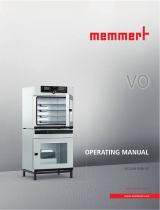 Memmert Vacuum Oven Vo User manual
Memmert Vacuum Oven Vo User manual
-
 Memmert IN PLUS Operating Instructions Manual
Memmert IN PLUS Operating Instructions Manual
-
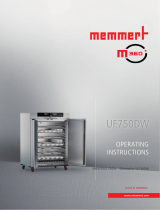 Memmert UF750DW User manual
Memmert UF750DW User manual
-
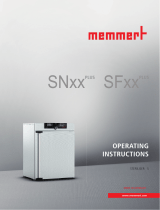 Memmert SN / SF plus User manual
Memmert SN / SF plus User manual
-
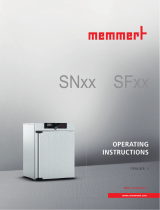 Memmert SN / SF User manual
Memmert SN / SF User manual
-
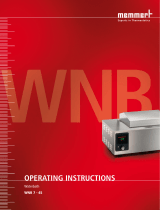 Memmert WNB User manual
Memmert WNB User manual
-
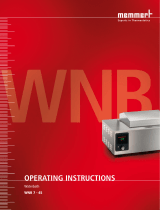 Memmert WNB User manual
Memmert WNB User manual
-
 Memmert UN Operating Instructions Manual
Memmert UN Operating Instructions Manual
-
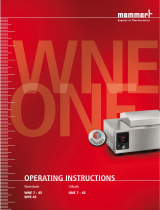 Memmert WNE User manual
Memmert WNE User manual
-
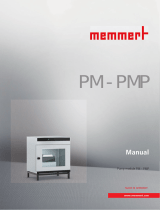 Memmert Pump Module PM/PMP User manual
Memmert Pump Module PM/PMP User manual
Other documents
-
Sony CDP-M555ES Installation guide
-
Sony CDP-M333ES Installation guide
-
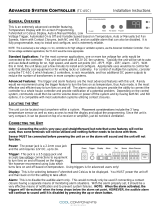 Cool Components TC-ASC-2 Owner's manual
Cool Components TC-ASC-2 Owner's manual
-
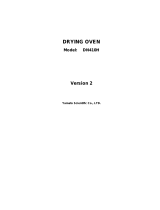 Yamato Scientific DN410H/610H Operating instructions
Yamato Scientific DN410H/610H Operating instructions
-
 Yamato Scientific DN410I/610I Operating instructions
Yamato Scientific DN410I/610I Operating instructions
-
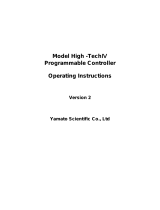 Yamato Scientific Hitech controller type Ⅳ Operating instructions
Yamato Scientific Hitech controller type Ⅳ Operating instructions
-
Danfoss EPU 2350/2354 User guide
-
Varian Saturn 2000 GC/MS User manual
-
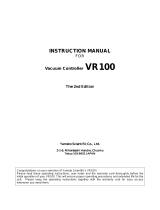 Yamato Scientific VR100 Operating instructions
Yamato Scientific VR100 Operating instructions
-
CTS G1 Control Operating instructions






































































